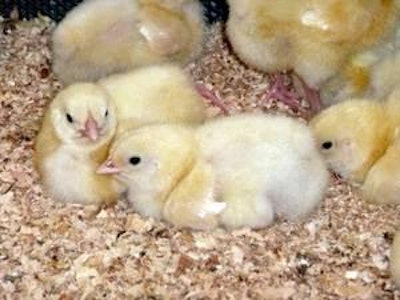
New poultry research in Australia has suggested that the leg strength of broiler chickens can be affected by the conditions of temperature and humidity applied during the incubation of the eggs, reports Australia's Poultry Cooperative Research Centre. The work has the potential to further reduce the incidence of leg weakness in broilers and improve the welfare of birds worldwide.
Poultry CRC funded the study at the University of Sydney, which examined the impact of differing sets of incubation conditions on early growth rate, bone composition and leg weakness measurements in a pure line broiler breed. The idea of carrying out such an examination came after a field report of an unusually high incidence of leg deformity in two separate hatches of pure-line grandparent chicks at a primary broiler breeder facility. Both problem hatches were hatched in the same incubator, which had suffered a sudden drop in temperature for two days and which, despite correction, had run with a lower relative humidity throughout the incubation period.
A preliminary study to compare chicks hatched under test and control incubation conditions failed to reproduce the deformities seen in the field report. However, the results did demonstrate that the test chicks at hatch had lower bone ash (mineral deposits in their bones) and higher levels of calcium and phosphorus in their blood than the control chicks. At 13 days of age, the test chicks had higher bone ash levels and equivalent amounts of calcium and phosphorus in their blood.
Importantly, at 41 days, the test birds had a shorter "latency to lie" (how quickly they choose to sit rather than stand) than did the control birds. This indicated that the test birds, compared with the controls, were not as comfortable standing for as long. Says Poultry CRC, the researchers suspect that the test incubation conditions compromised bone development before hatch, possibly causing leg weakness later in life.

















